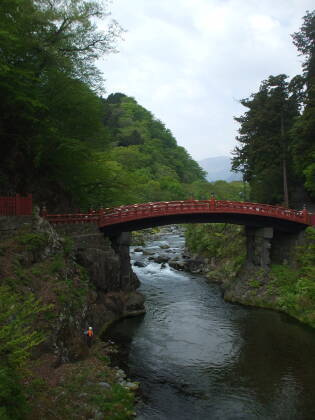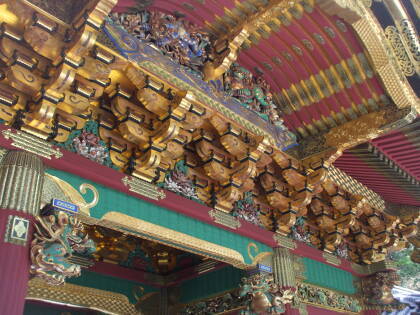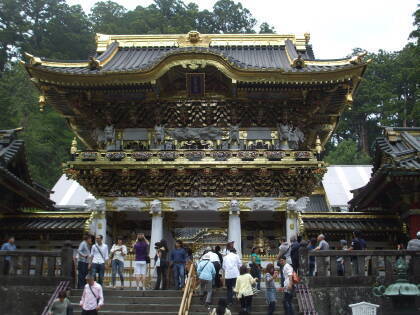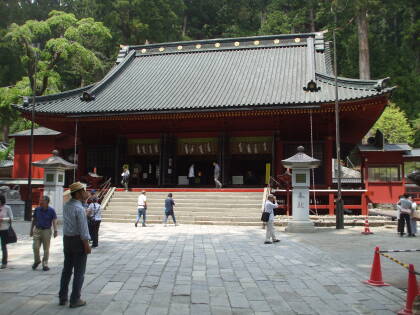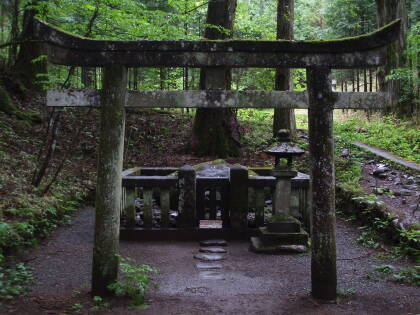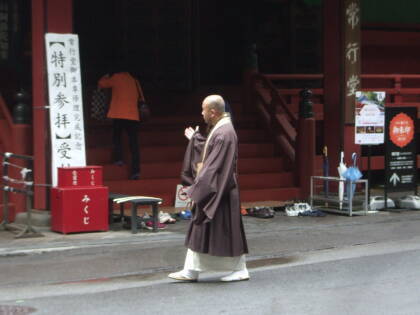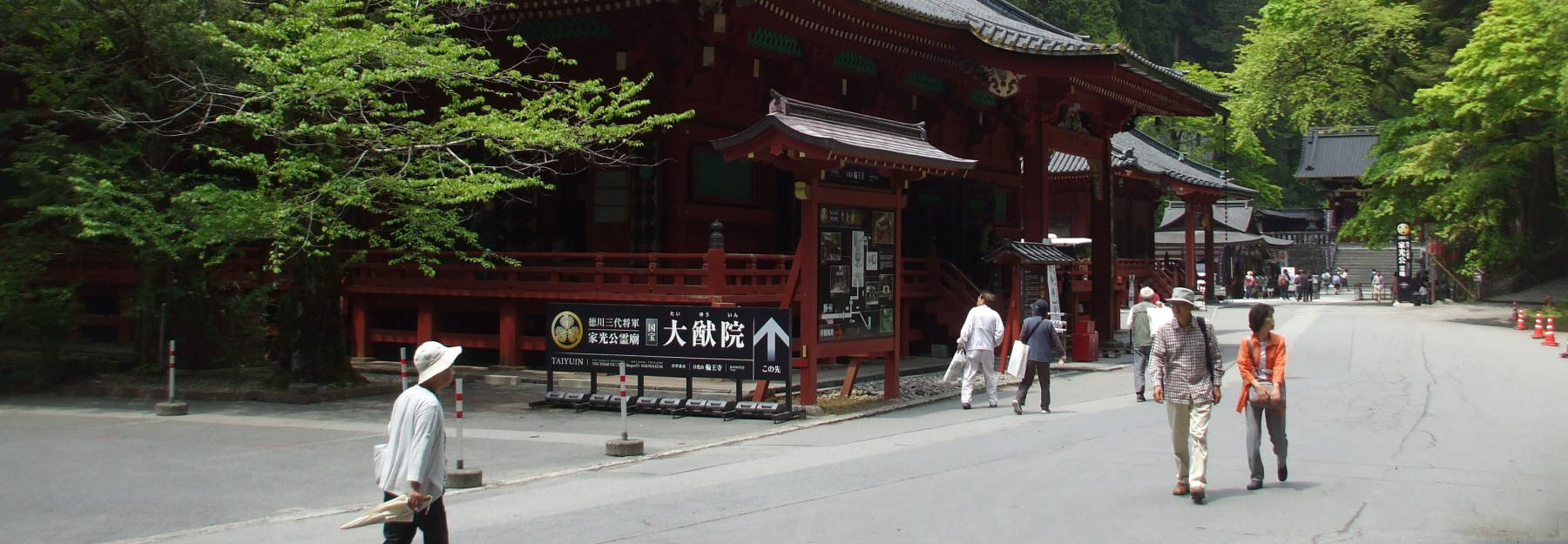
Other Renno-ji Sites
Other Sites
Let's catch up with some remaining sites associated with the Renno-ji temple complex — a 5-story pagoda, the paths through the cedar trees, and another Buddhist temple.
The pagoda stands 36 meters tall. Pagodas are usually built as tombs or as a memorial to a deceased figure. They traditionally have an odd number of levels, five in this case.

Some of the paths through the overall Renno-ji complex are lined with large Cryptomeria trees, called "Japanese Cedar" or "Japanese Redwood" in non-scientific English.
The species reaches heights up to 70 meters with 4-meter trunk diameter, and is similar to the related giant sequoia. It's known as sugi in Japan, where it's the national tree.
The overall Cedar Avenue of Nikkō is over 35 kilometers long, lined with about 13,000 of these trees.
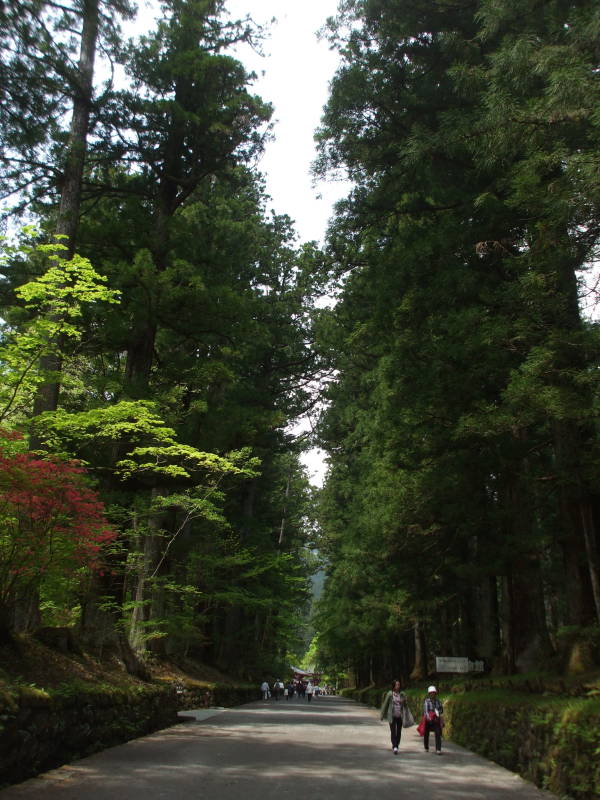
This Buddhist temple is between the approaches to Iemitsu Taiyuin and Futarasan Jinja.
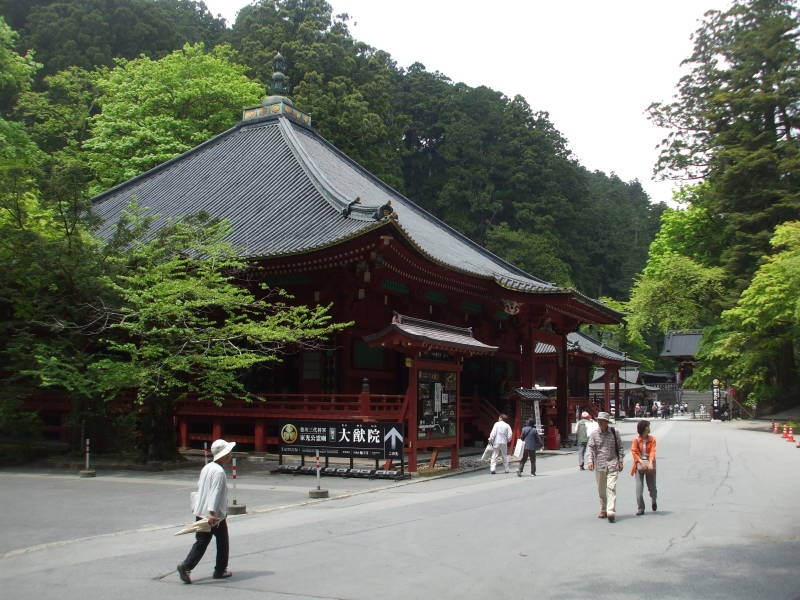
As with almost all templs, you remove your shoes before stepping onto any wooden or tatami (rice-straw mat) surface.


Once inside, you progress clockwise around the central altar.
There's a small Shintō shrine in the back corner. Its kami is said to be "maybe seen infrequently, maybe never." Shintō can be quite vague.

Let's visit some final sites around Nikkō.
Choose your next stop around Nikkō:
Or, somewhere else around Japan:
